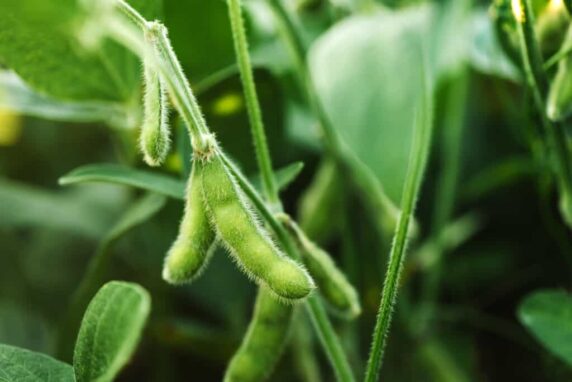Soy is a whole legume that contains a wide range of health-promoting substances. It contains a high amount of B vitamins, potassium, magnesium and is rich in quality proteins. In 2019, a meta-analysis was conducted, based on which the influence of soy on human health was evaluated. People who consumed large amounts of phytoestrogens (one of the biggest “spooks” in soy) were found to have the lowest risk of death of all individuals studied. Phytoestrogens are substances that are similar to the human hormone estrogen, but behave differently in our body. According to numerous studies, these phytoestrogens bind to receptors that suppress the growth of tumor cells. Based on this fact, it can be said that soy does not cause cancer. In addition, the results of studies conducted on a larger number of people indicate that soy consumption does not affect testosterone levels and does not cause feminizing symptoms.
Soy intake should be monitored by people suffering from reduced thyroid function. This legume is not the cause of this disease, it just accelerates its manifestation. According to the British Dietetic Association, soy consumption does not have a bad effect on thyroid function in healthy individuals. However, it can interfere with the absorption of drugs that are prescribed for problems with this organ.
It is true that soy is one of the causes of deforestation. Along with cattle grazing, it is even one of the biggest causes of this problem. However, these are not soybeans that are grown to make tempeh, tofu, or miso. Most of this soy is used as feed for livestock and farmed fish. Only about 6% of the world production of this crop is used for direct human consumption. In addition, soy intended for human consumption is not genetically modified, unlike forage.
Soy is a healthy raw material that brings many benefits to the human body. The products available on our market are most often made from soybeans grown in Slovakia or Austria. Due to its production, there is no cutting down of rainforests and it is not GMO.
Source: Česká veganská společnost
Soy in our kitchen
TOFU
It is made by curdling soy milk with nigari or calcium salts. Hard tofu is pickled with sesame oil and put in a sushi bowl or you can add it to kimchi rice. We use soft (silken) tofu in Thai curry.
TEMPEH
It is produced by fermentation of soybeans. These are cooked and loaded into a culture of Rhizopus oligosporus or Aspergillus oryzae, this bean culture will sprout and form a hard white colored consistency. You can add tempeh to kimchi rice or go green (in Prague). It is one of the ingredients of Buddha loves broccoli (in Brno and Vienna).
EDAMAME
They are immature soybeans that are most often prepared by boiling them in salted water. We use them in sushi bowls.
SOY SAUCE
It is a dark brown salty sauce made from soybeans that are fermented with Aspergillus oryzae and Aspergillus soyae along with water and salt. We use gluten-free soy sauce so that the dishes can also be suitable for people suffering from celiac disease.
MISO
It is a paste made from soybeans that have been boiled, mixed with sea salt and inoculated with a koji mushroom culture. They are then left to slowly ferment for several months to years. According to regional variations, rice, barley, sago, azuki or hemp seed can also be added to soy. We work with a white bowl and use it as a topping for the quinoa bowl.






